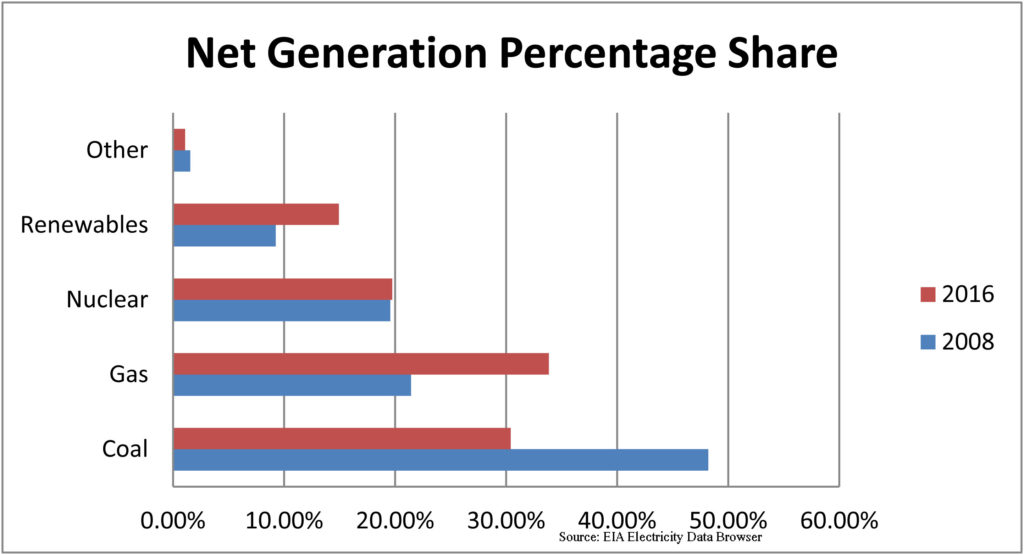Energy Secretary Rick Perry clearly has bought into the fact-challenged approach to governing perfected by President Trump and now practiced almost daily by White House spokesman Sean Spicer: In a speech last week to the National Coal Council, Perry told the group that one of key problems from the Obama administration’s energy policies is “that we’re seeing this decreased diversity in our nation’s electric generation mix.”
Unfortunately for Perry, the fact is that the nation’s electric generation mix actually is much more diverse today than it was eight years ago. According to data from EIA, the independent statistics arm of his new agency (the same one, of course, that he forgot he wanted to eliminate back in the 2012 presidential campaign), the U.S. grid is demonstrably, provably and irrefutably more diverse now, as the chart below demonstrates.
Coal’s share of the market, as everyone knows, has fallen, dropping from roughly 50 percent of the total in 2008 to just under a third today. In its place, the amount of gas generation has shot up, and now accounts for about a third of the nation’s generation total as well. The rest of coal’s lost market share has been gobbled up by the wind and solar industries, with nuclear largely unchanged. Objectively, a system where two sources account for roughly 33 percent of the total, a third 20 percent and a fourth 15 percent is significantly more diverse than one with a single resource accounting for almost 50 percent of the total, and the next two at roughly 20 percent each.
Secretary Perry may not like the changes, but to say that something is not what it is, indeed, to say that it is the opposite of what it is, borders on the irresponsible. Worse, the secretary is using this and a number of other questionable assumptions as the basis for a department study looking into issues surrounding the “long-term reliability of the electric grid.”
Continue reading Energy Secretary Perry
Badly Misses Mark
In Grid Study Memo

 Follow
Follow